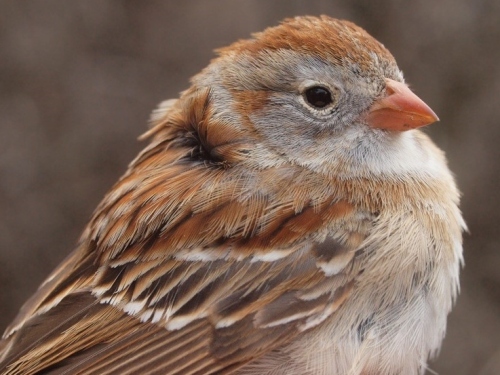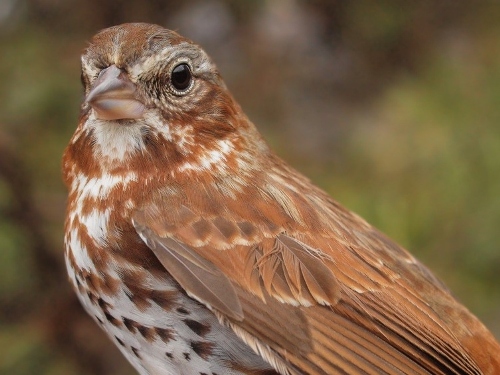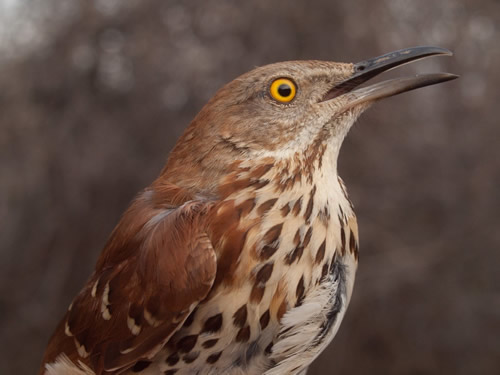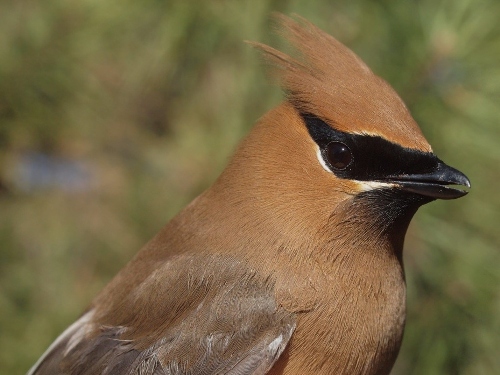|
|
THIS WEEK |
THIS SPRING |
2014 TOTAL |
SITE TOTAL |
|
# birds (and species) banded |
169 (20) |
169 (20) |
169 (20) |
46479 (113) |
# birds (and species) repeat |
22 (9) |
22 (9) |
22 (9) |
9156 (70) |
|
# birds (and species) return |
31 (9) |
31 (9) |
31 (9) |
1465 (38) |
|
# species observed |
69 |
72 |
74 |
209 |
|
# net hours |
502.5 |
502.5 |
502.5 |
79685.8 |
|
# birds banded / 100 net hours |
33.6 |
33.6 |
33.6 |
58.3 |
|
|
Note: table does not include nocturnal banding (owls) |
Banders-in-charge: Simon Duval, Gay Gruner
Assistants: Christine Barrie, Nicolas Bernier, Sue Bishop, Marc Boisvert, Cindy Bouchard, Marie-France Boudreault, Claude Cloutier, Luke Currin, David Davey, Jean Demers, Barbara Frei, Alison Hackney, Lisa Keelty, Marcel Lebeau, Francine Marcoux, Betsy McFarlane, Ana Morales, Benoît Piquette, Catherine Russell, Ahmad Shah, Clémence Soulard, Patricia Stotland, Elise Titman, Rodger Titman, Christiane Tremblay, Christiane Tremblay
Notes: As always, we look forward to the arrival of week 4, which marks the start of our 45-day spring banding season. Usually migration is still quite modest at this point, with weekly totals over the past nine years ranging from 39 to 141 – so the new record of 169 this week was quite a pleasant surprise! The 31 returns this week is also a big jump over the previous week 4 record of 24 set just last year. To go along with that, the 69 species observed this week tied the previous record set in 2008 … perhaps not coincidentally the last time we had such a late spring.

In a week of unusually abundant species, it was almost easy to overlook the significance of this bird – the first Field Sparrow banded at MBO since spring 2006, and only the fifth one overall.
(Photo by Simon Duval)
|
The high count of species this week included 19 new arrivals for the season – or at least new observations (the Great Horned Owl was no doubt here all along, just not previously detected). Among the other new species were half a dozen diurnal raptors – Turkey Vulture, Bald Eagle, Northern Harrier, Cooper’s Hawk, Broad-winged Hawk, and Merlin; the first four of those were observed as part of a good raptor migration on the first day of the week.
This week’s
top 10 [last week's top 10 in brackets]
#
individuals banded |
mean # individuals observed daily |
1. Cedar Waxwing (33) |
1. Canada Goose (373) [1] |
2. Ruby-crowned Kinglet (28) |
2. Cedar Waxwing (69) [3] |
2. Fox Sparrow (28) |
3. Red-winged Blackbird (62) [2] |
4. American Robin (21) |
4. American Robin (43) [4] |
5. Golden-crowned Kinglet (13) |
5. Ring-billed Gull (39) [7] |
6. Song Sparrow (10) |
6. Greater Snow Goose (24) [6] |
7. White-throated Sparrow (6) |
7. Song Sparrow (19) [5] |
| 8. Black-capped Chickadee (5) |
8. Black-capped Chickadee (13) [9] |
| 8. American Tree Sparrow (5) |
9. Fox Sparrow (13) [-] |
| 10. Red-winged Blackbird (4) |
10. Common Grackle (12) [-]
|
|
Four
species contributed strongly to this week’s new banding record. Leading the way was Cedar Waxwing, which has topped the banding list for week 4 twice before (in 2005 and 2010) albeit with lower counts, but in five other years didn’t even crack the top ten for this week! Ruby-crowned Kinglet is almost always among the top five species to kick off the banding season, but only once before did it occur in higher numbers at this time of year (a whopping 56 of them banded in week 4 of 2008 … yet another parallel between the 2008 and 2014 spring seasons). The number of Fox Sparrows this week was particularly impressive, as the spring total for the species ranged from 0 to 23 from 2005 through 2012, and only last year finally surpassed that level with 42 banded, including 32 in this week. Rounding out the impressive top four was American Robin, with this week’s 21 individuals a big jump over the previous high of 13 for week 4, and notable as the species hasn’t even cracked the top ten for this time of year in four of nine previous spring seasons. Although a more modest count, the 13 Golden-crowned Kinglets is perhaps the most noteworthy of all, as in one week we banded more than in any previous spring (and in fact, more than the previous 7 spring seasons combined!). Rounding out the top ten are three of our common early spring sparrows in relatively typical numbers, a handful of chickadees, and a somewhat below-average count of Red-winged Blackbirds.
Over the past five years, Canada Goose numbers have been relatively modest in week 4, with mean daily counts ranging from 51 to 159, and generally reflecting a tapering off of numbers from an earlier peak of migration. However, from 2006 to 2008, their migration peaked in week 4, and so far at least that pattern is holding this spring. Matching the banding results, Cedar Waxwings were observed in strong numbers this week, more than doubling any previous year. The American Robin flocks were also much larger than usual, although not quite at the record levels observed in 2012. Conversely, despite the relatively few Red-winged Blackbirds banded, they were present in above-average numbers this week. Among the rest of the top ten, Fox Sparrow was the most noteworthy, with the third highest mean daily count for this time of year, after 20 in 2013 and 14 in 2008.
|

One of the near-record 28 Fox Sparrows banded this week.
(Photo by Simon Duval)
 Much larger, but with some overall similarities in plumage pattern to the Fox Sparrow was this Brown Thrasher. Much larger, but with some overall similarities in plumage pattern to the Fox Sparrow was this Brown Thrasher.
(Photo by Simon Duval)
|




 Much larger, but with some overall similarities in plumage pattern to the Fox Sparrow was this Brown Thrasher.
Much larger, but with some overall similarities in plumage pattern to the Fox Sparrow was this Brown Thrasher.